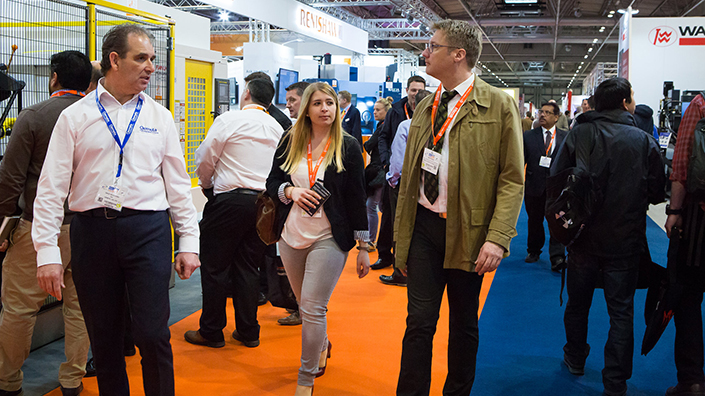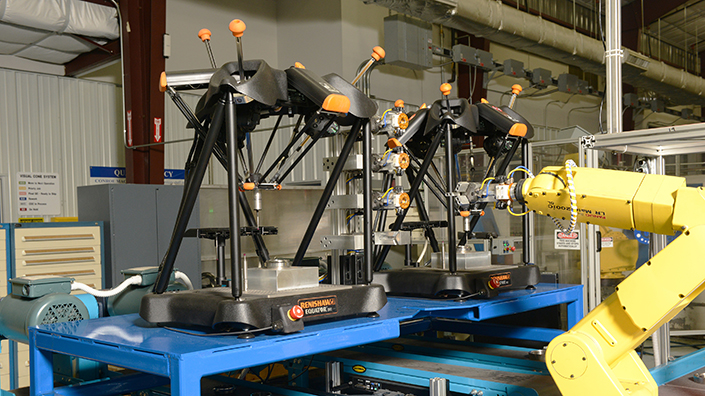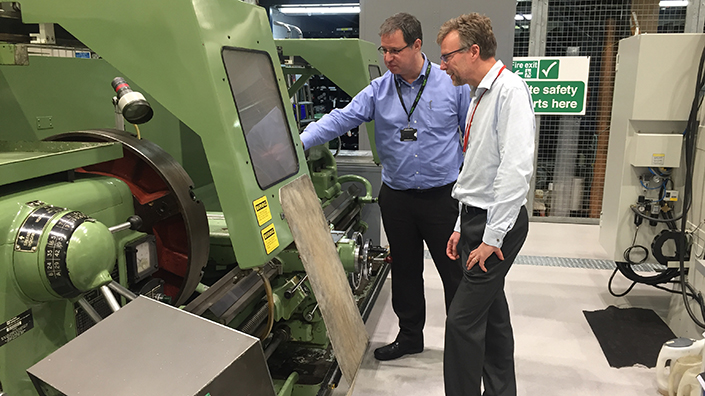At a factory in Singapore, David Butler made a surprising discovery. Working as an engineering professor and metrology expert, he was visiting a company building lights and optical parts.
The company had a serious issue – a 15% defect rate, which meant money pouring down the drain. But when Butler asked about its manufacturing processes, he was surprised by the jargon-heavy reply.
“They said they were going to do ‘lean Six Sigma’.” The phrase – sometimes shortened to L6S – indicates a business strategy relying on collaborative team effort to reduce defects and minimise waste in areas including overproduction and inventory. Instead of analysing the root causes in the manufacturing processes and tackling them immediately, bosses were instead bandying around a hyped-up term for complex organisational change.
“They were running before they could crawl,” Butler recounts. The defect rates involved expensive pieces of equipment, so he was “very surprised that it wasn’t a priority. It was like: ‘So I hear lean Six Sigma will sort it out’.”
Eight years on, and now working at the UK’s National Physical Laboratory (NPL), Butler says he sees many companies making the same mistake. This time, however, the buzz phrase is different.
We are, some might say, at peak Industry 4.0. Countless articles promote the potential benefits of automation, digitisation and artificial intelligence, while gurus and ‘thought leaders’ crowd conference stages, many hawking their own versions of Internet of Things platforms, security programs or robotic arms.

Visitors explore the MACH 2018 conference (Credit: MTA)
Industry 4.0 and L6S are not identical but they have similar aims. Companies are desperate to increase their efficiency and maximise profits, eager to secure a stable foothold in an uncertain future.
The fourth Industrial Revolution’s cheerleaders promise so much, but companies risk making big losses from misguided or mistimed investments if they allow themselves to become swept up in the hype.
Instead, perhaps, they need a more measured approach.
‘Measurement 4.0’
In the beginning, says Thomas Rexer, there was steam power. Then the second Industrial Revolution brought electricity, smaller machines and mass-production lines. In the 1970s, IT systems and fenced-off assembly robots came along.
“Now in the fourth revolution we see that all these things get closer together,” says the director of 3D machine vision for measurement company Faro, speaking over the buzz and whirr of 3D printers and inspection machines at the MACH 2018 exhibition in Birmingham. “Robots get closer together with humans. Everything is interlinked, data is exchanged… accessed from all the machines and operators.”
A crowd of manufacturing bosses, engineers and technicians might be au fait with Industry 4.0, but Rexer’s talk quickly moves on to a perhaps unglamorous issue that receives less attention than efficiency and profit gains – measurement.
Automation adds complexity
New digital and automated technologies are transforming companies’ metrology requirements, says Rexer. Tentatively dropping the phrase “Measurement 4.0,” he summarises: “It is about transparency, complexity, flexibility, safety and accuracy.” Production lines are increasingly automated while items become more complex, with rising levels of customisation for cars in particular. New technologies enable increased flexibility in factory floor layouts, and robots travel between shelves and assembly lines. “You have to provide flexible, adaptive measurement solutions that keep track with the changes,” says Rexer.
With fewer human operators, machines depend on swathes of accurate data to operate independently. Automation and related concepts such as predictive maintenance also rely on transparent, easy-access information on everything from machine downtime to shop-floor temperature.
Industry’s demands – transparency, complexity, flexibility, safety and accuracy – have created a busy marketplace. Countless companies crowd the corridors at MACH, each promoting products that begin to look identical after a while.
In a fast-moving sector, bosses demand instant data to tweak production lines and ensure maximum profits. “You don’t want to get the results the day after, you want to get the results at the very beginning,” says Rexer.
Transparency and immediate data access are key to the new, larger Equator gauging system from esteemed multinational Renishaw. The updated comparator machine, which captures a thousand data points per second with its three-axis probe running along components’ sides and edges, is designed for full accessibility and ease of use.

A pair of Renishaw Equators (Credit: Renishaw)
Equator data also feeds back into fully automated processes, making small adjustments to maintain constant quality. “You know you’re getting good repeatability,” says Chris Pockett, Renishaw’s head of communications, at MACH.
Industry 4.0’s central pillar of flexibility is also driving the growing handheld 3D scanner sector. Companies including Artec, Creaform, Europac 3D, Zeiss and many others sell the ‘point and shoot’ devices, which shine lasers or other light beams into a scene and collect the reflections with high-grade optical sensors. Software then combines information from the reflected beams with internal positioning data to create virtual 3D models with resolutions below 0.1mm.
Operators can scan individual objects or larger environments, providing useful information for design adjustments, reverse engineering and quality checks.
The scanners are quick to use, accessible and provide huge amounts of data. They are, however, not cheap – entry-level devices start at $5,000, but prices climb up to $100,000 – and they are the polar opposite of hyper-controlled metrology labs with steel or granite-framed machines for consistent results regardless of temperature changes.
As the data flow increases, another problem appears.
Digital diarrhoea
“People just get overwhelmed,” says Tim Jones. As service development leader for product verification at the NPL, Jones brings the government laboratory’s wealth of knowledge to manufacturers around the country. “You get the extremes of going into companies where they’ve bought expensive measurement equipment but don’t really understand why they’ve bought it,” he says. Relatively low-cost and easy data collection is facilitating “seismic changes,” he adds – but companies risk being damaged in the tremors.
“You can waste a lot of money on a piece of measurement equipment which you don’t really need if your manufacturing process can’t operate to that sort of level of variation,” he says. “It’s like most companies don’t know what to measure first.”

David Butler and Tim Jones at the NPL (Credit: Joseph Flaig)
Now based in Scotland after years in South East Asia, Jones’s colleague David Butler feels the same way. “People talk about data like it’s this nebulous thing which covers everything, but you must ask the fundamental questions. What data do I need, what data should I collect, how reliable is it?”
He adds: “You can go in the wrong direction. I used to call it digital diarrhoea – so much information is flowing, how do you catch what you need?”
Feeding the right data into new digital systems is also key, writes Adam Hooper from defence, aerospace and automotive supplier Martin’s Rubber Company in a report for the Access Group: “If you put garbage in, you’ll get garbage out.”
Data overload is symptomatic of many companies’ approach to Industry 4.0, claim Butler and Jones. With buzzwords such as disruption, machine learning and that omnipresent label ‘smart’, it is easy for manufacturers to get overexcited and launch into strategies without proper preparation.
The risks are clear. A survey by technology conglomerate Cisco found a huge 60% of Internet of Things initiatives stall at the proof-of-concept stage, while a third of all completed projects at almost 2,000 respondents were not successful.
Tesla recently highlighted the risks of over-automation (Industry Pulse, PE April/ May), and others face similar issues if they rush ahead. Initiatives grind to a halt once “low hanging fruit” have gone, says Everest chief executive Peter Bendor-Samuel in an article for CIO.

A HandySCAN3D handheld device scans an object (Credit: Creaform 3D)
Relying on vast sensor networks, sophisticated software and robotics, Industry 4.0 initiatives could cost many thousands of pounds, so any failure is a financial blow. The reason for IoT concept failure is often weak business cases – while measurement issues are not to blame, the rate of failure shows how volatile and difficult new practices can be without proper understanding and preparation.
“Before you even start on a journey you at least need to have some understanding and control,” says Butler. “People say ‘I want to do it, because I heard about it…’ but there are still a lot of steps in between, such as education and understanding what you are currently doing before you move.”
It might not be as catchy and engaging as the conference seminars promising countless improvements, but Butler and Jones’s message is sound – before attempting to join Industry 4.0, review your processes, consult experts and start small.
Whether it is Industry 4.0, L6S or some other concept that will appear in a couple of years, the message is obvious: don’t run before you can walk, and don’t always believe the hype.
Content published by Professional Engineering does not necessarily represent the views of the Institution of Mechanical Engineers.